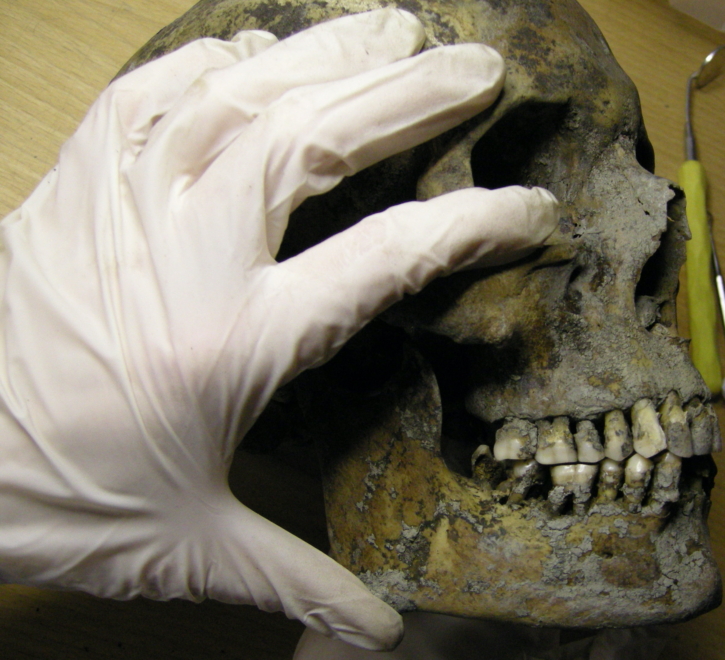

Still from the series ‘Vikings’
In 2005, excavations behind Varnem Monastery, located in the Swedish city of Skara, revealed the ruins of a Christian church built of stone in the early 11th century. This is one of the oldest in the country, although it is known that another wooden church previously stood on this site. In any case, the important thing about this story is that A large cemetery with thousands of graves was also discovered a few meters away. Vikings, dating from between the 10th and 12th centuries. And now more than 300 of them have undergone archaeological and osteological analysis.
Researchers led by Caroline Bertilsson from the University of Gothenburg, Sweden, analyzed more than 3,200 teeth from 171 people buried there. This Wednesday they published the results of the study in a scientific journal PLOS ONEand the conclusions are obvious: The Swedish Vikings suffered from painful dental problems and tried to cure them from time to time..
This was, without a doubt, one of the main problems that had to face a people who went down in history with their ferocity and who had warriors spreading terror in Europe for centuries. Known for their conquest and colonization activities, it has even been proven that they arrived in the Americas at least 500 years before Columbus.
Now researchers They examined the wear of their teeth, their anatomical variations and other dental pathologies. They did this by using dental probes, powerful light sources and X-rays to gather more information. Of the 171 people analyzed, 133 had already developed permanent teeth, while a further 38 had primary teeth (known as baby teeth) or mixed teeth, which is the period during which one tooth transitions from one tooth to another.

The results show that almost half of the analyzed individuals (49%) had at least one carious lesion, although among adults the percentage rose to 62%. In general, in the adult population, 13% of teeth were affected by caries, with the first molar of the mandible most often damaged.
“The distribution of carious lesions was as follows: 7% of teeth had caries in the crown, 7% in the root and 1% of teeth had caries in both the crown and root.”, state the authors. “The most susceptible site of caries was the root (25%), followed by the occlusal (19%), mesial and distal (15%) and lingual/palatal (13%),” they add.
But also, The Vikings lost 23% of their teeth. Excluding wisdom teeth, which account for a minority of these losses, 74% were lost after death and 26% before death. This means that 6% of the teeth of the study population were lost. lifetime.
From there, The study also found some less common findings. For example, five people had dental aplasia (congenital absence of a tooth); another had two lateral teeth in a “peg” shape, and in two other individuals the molar appears to have been modified to create an opening in the pulp chamber.
Another person had changes in the oral enamel of the incisor due to periodontal inflammation, and up to seven people had signs of “atypical” tooth wear. Enamel pearls were also found.and although crowding of teeth, as well as malocclusions, were rare, prognathism (mesioocclusion) was found in one individual.
Better understand the life of the Vikings
The average age of the dead at the time of the collapse of this Viking community was only 35 years. But even then, about a thousand years ago, researchers proved that the Vikings “they manipulated” your teeth by filing or brushing your teeth to treat your problems.
For all these reasons, the jaws and teeth of the remains excavated at Skara have already become “valuable evidence” of the daily life of this unique early Christian settlement. And this became possible thanks to These highly mineralized structures are well preserved. opening.
The researchers were able to analyze the general health and illnesses of the Vikings, as well as their dietary composition and the frequency of perceived pain from oral discomfort and daily tasks. “Tooth decay, jaw infections and tooth wear provide a unique insight into your life. Examination of dental tissues such as enamel, dentin and dental pulp can give us responses related to microbiota, food isotopes and heritage which can improve our knowledge of ancient populations,” the authors summarize.
The researchers recall that previous studies strongly indicate increasing prevalence of dental caries over time, from prehistoric times to the 19th century, with a peak in the early to mid-20th century due to the advent of highly processed foods and the increasing availability of white sugar. But to date, only a small number of scientific papers have been published on the dental health of Viking remains in Sweden.
Previously, other studies delved into the diet and mobility of the Warnham Vikings and concluded that they were largely non-native, highly mobile and Their diet was based primarily on terrestrial resources with some water resources.
Source: El Independiente